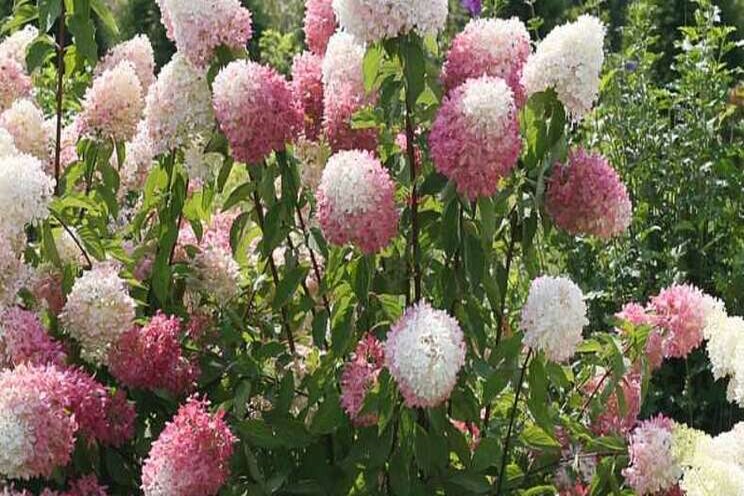Researchers studying cold-hardy hydrangeas
Added on 08 April 2020

"The floriculture and bedding plant industry is a top agricultural commodity in New Hampshire, and the number of farms producing field-grown cut flowers has increased by a staggering 60% from 2007 to 2017," says Kaitlyn Orde, a Research Associate who will oversee the project at the Woodman Horticultural Research Farm, a facility of the New Hampshire Agricultural Experiment Station. "This dramatic increase suggests cut flowers are an increasingly important horticultural crop in the state and illustrates that consumer demand is strong for regionally grown flowers.
"However, no studies have been conducted to evaluate these species in the Northeast, making providing information to the commercial farming community on characteristics and performance nearly impossible," says Orde, who will conduct the research with experiment station researcher Becky Sideman, Professor of Sustainable Agriculture and Food Systems and UNH Cooperative Extension Professor and specialist in sustainable horticulture production, and Cathy Neal, retired experiment researcher and Extension Landscape Horticulture Specialist.
Hydrangea is widely recognized for its ubiquitous use as a landscape shrub across Cape Cod and Nantucket and as a cut flower by florists. However, this species is only reliably winter hardy through USDA Zone 6, which is south of most of Northern New England, and injury in winter to buds is common when the species is grown in colder areas, making establishing it in New Hampshire risky.
There are many other species of hydrangea, including species that are more cold hardy than the big leaf type. Notable hydrangea species are H. paniculata ("panicle"), H. quercifolia ("oakleaf"), and H. arborescens ("smooth"), which are believed to be hardy through Zone 4 and Zone 5, respectively, making them obvious choices for growing in New Hampshire.
In the three-year project, researchers will evaluate 14 hydrangea cultivars from the cold-hardy panicle, oakleaf, and smooth species. They will measure several factors to determine cultivar suitability for both landscape and cut flower use, including winter survival, plant vigor, bud hardiness, stem length, stem number, head size, flowering time and duration, color, and any notable pest and pathogen challenges. They also plan to measure the vase life of the cut stems, as a life of at least seven days has been cited as an important factor by florists in the area.
"We will generate and share information on plant hardiness, cultivar characteristics, and the suitability of cultivars for cut flower use. This information will hopefully allow growers, florists, and landscapers to confidently select cultivars for their intended purpose," Orde says.
"All of the florists we surveyed expressed interested in purchasing locally produced hydrangea stems, and all the commercial growers we surveyed expressed interested in growing hydrangeas. This leads us to believe that there is tremendous potential for business partnerships between these two entities, and we hope that this research will help to support the development of these relationships," Orde says.
Researchers also plan to showcase the hydrangea cultivars at annual field days at the Woodman Horticultural Research Farm, as well as twilight meetings hosted by UNH Cooperative Extension. This will allow commercial growers and landscapers the opportunity to view the cultivars and gather information on specific cultivars.
This material is based on work supported by the NH Agricultural Experiment Station through joint funding of USDA's National Institute of Food and Agriculture (under award number 1019868) and the state of New Hampshire. It also is supported by the Anna and Raymond Tuttle Environmental Horticulture Fund and the N.H. Department of Agriculture, Markets, and Food Specialty Crop Block Grant Program.
Source and Photo Courtesy of Greenhouse Grower
Source: Greenhouse Grower
More news















